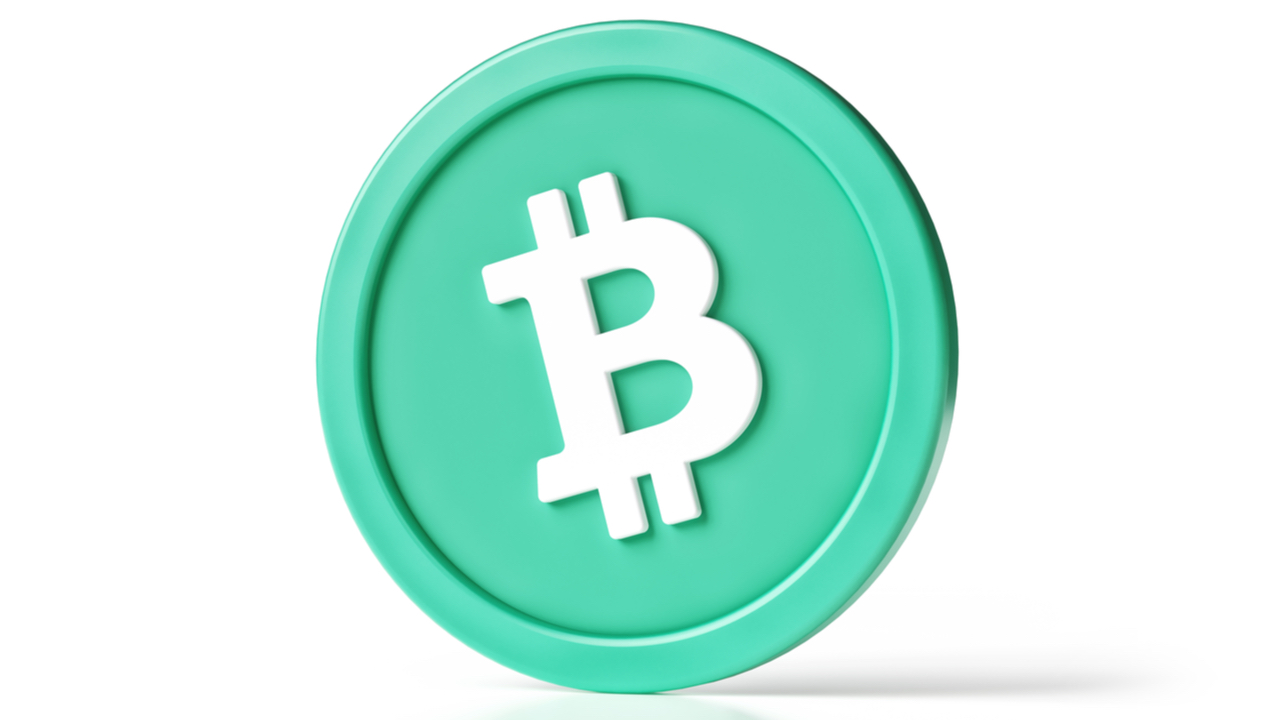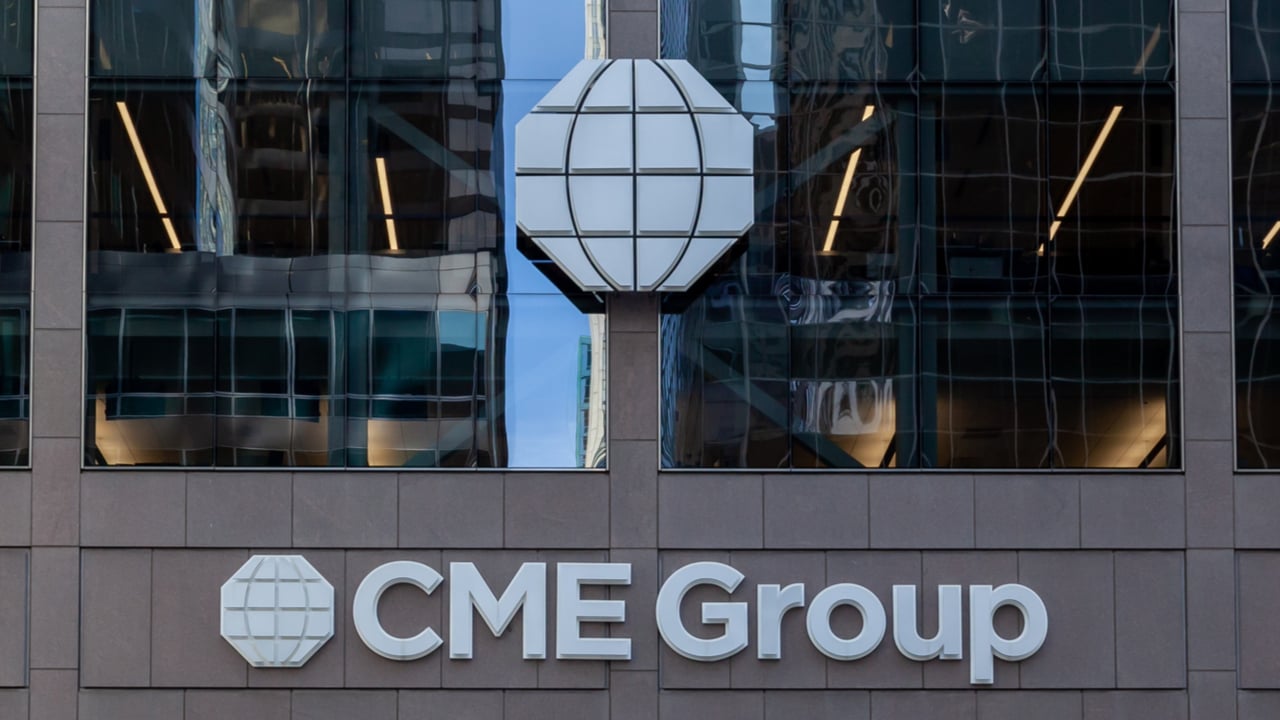 On a day where bitcoin broke out of its $20,000 support point, BCH bounced on its own floor, climbing higher on Saturday. BCH was up by nearly 7% to start the weekend, whilst MATIC fell to its lowest point since last April. Bitcoin Cash (BCH) Despite yet another red wave in crypto markets on Saturday, […]
On a day where bitcoin broke out of its $20,000 support point, BCH bounced on its own floor, climbing higher on Saturday. BCH was up by nearly 7% to start the weekend, whilst MATIC fell to its lowest point since last April. Bitcoin Cash (BCH) Despite yet another red wave in crypto markets on Saturday, […]
The rumor surfaced after a Twitter thread by @FatManTerra shared the alleged details on how Kwon, along with Terra influencers, managed to drain funds while artificially maintaining the liquidity.
Do Kwon, the CEO and co-founder of the infamous Terra (LUNA) and TerraUSD (UST) ecosystems, refuted the claims of cashing out $80 million every month for nearly three years.
Numerous unconfirmed reports surfaced on June 11, claiming Kwon’s participation in draining liquidity out of LUNA and UST before the crash to purchase US dollar-pegged stablecoin such as Tether (USDT).
Rumors about Kwon cashing out LUNA and UST reserves surfaced after a Twitter thread by @FatManTerra shared the alleged details on how Kwon, along with Terra influencers, managed to drain funds while artificially maintaining the liquidity.
Some of you thought $80m per month was bad. That's nothing. Here's how Do Kwon cashed out $2.7 billion (33 x $80m!) over the span of mere months thanks to Degenbox: the perfect mechanism to drain liquidity out of the LUNA & UST system and into hard money like USDT. (1/13)
— FatMan (@FatManTerra) June 11, 2022
However, the entrepreneur advised the crypto community to steer away from fueling the rumor until it was proven true:
“This should be obvious, but the claim that I cashed out $2.7B from anything is categorically false.”
Sharing his side of the story, Kwon stated that the recent rumor of cashing out $80 million per month contradicts the claims that he still holds most of his LUNA holdings, procured during the airdrop. Moreover, Kwon further reiterated that his income over the past two years has only been a cash salary from TerraForm Labs (TFL).
3/ To reiterate, for the last two years the only thing ive earned is a nominal cash salary from TFL, and deferred taking most of my founder’s tokens because a) didn’t need it and b) didn’t want to cause unnecessary finger pointing of “he has too much”
— Do Kwon (@stablekwon) June 12, 2022
Kwon told the community that “spreading falsehood” adds to the pain of all LUNA investors, remarking that:
“I didn’t say much because I don’t want to seem like playing victim, but I lost most of what I had in the crash too. I’ve said this multiple times but I really don’t care about money much.”
Related: Anchor dev claims he warned Do Kwon over unsustainable 20% interest rate
Mr. B, a developer from Anchor Protocol, a Terra-centric sub-ecosystem, allegedly warned Kwon about the unrealistic high-interest rates. Mr. B said that the platform was designed only to offer an interest rate of 3.6% for keeping the Terra ecosystem stable, but was changed to 20% just before the release:
“I thought it was going to collapse from the beginning (I designed it), but it collapsed 100%.”
The developer allegedly suggested to Kwon about lowering the interest rates but the request was refused. Do Kwon has been summoned to attend a parliamentary hearing on the matter in South Korea in mid-May.
 Bitcoin cash supporters are known for spreading adoption over the years and 2022 is no different. This year, the peer-to-peer cryptocurrency bitcoin cash has seen significant adoption throughout the islands of the Caribbean, alongside places like Dubai, and Mumbai. Bitcoin Cash Advocates Continue to Promote Peer-to-Peer Crypto Adoption According to the web page map.bitcoin.com, there […]
Bitcoin cash supporters are known for spreading adoption over the years and 2022 is no different. This year, the peer-to-peer cryptocurrency bitcoin cash has seen significant adoption throughout the islands of the Caribbean, alongside places like Dubai, and Mumbai. Bitcoin Cash Advocates Continue to Promote Peer-to-Peer Crypto Adoption According to the web page map.bitcoin.com, there […]
The challenges faced by Terra, Wonderland and a handful of other DeFi projects exposed the need for investors to do more research and avoid cult personalities.
Satoshi Nakamoto left a large pair of shoes to fill after releasing the code for Bitcoin (BTC) to the world, helping to establish the network, then vanishing without so much as a trace.
Over the years, the crypto ecosystem has seen many developers and protocol creators rise in stature to become crypto messiahs for faithful holders who eventually have their best-laid plans end in catastrophe when the protocol is hacked, rugged or abandoned by whimsical developers.
2022 is hardly halfway complete and the year has already seen a particularly bad stretch of good intentions gone awry, which have collectively helped plunge the market into bear-market territory. Here’s a closer look at each of these instances to help provide insight into how similar outcomes can be avoided in the future.
Satoshi may have successfully remained anonymous while launching Bitcoin, but in most instances since then, having anonymous developers has turned out to be a red flag.
Many anonymous developers cite personal safety reasons for taking this route. While this is a valid reason in some cases, sometimes anon developers are hiding from previous misdoings or pre-planning to cover their tracks in the case of future offenses.
A flagrant example of this was Squid Game (SQUID), a Netflix-show-inspired memecoin that rallied 45,000% within a few days after launch, only for traders to realize that they were unable to sell the tokens on any exchange.
Investors eventually discovered that all the developers were anonymous and all social media channels were blocked from comments.
The crypto community has grown to be rather distrustful of anonymous developers and this can be seen in the negative reaction to the revelation that the founder of the Azuki nonfungible token (NFT) project was involved with three other NFT projects that were ultimately abandoned, leaving their holders with little to show except worthless jpegs.
Another instance of an anonymous developer going rogue occurred in 2022 when it was revealed that the anonymous Wonderland (TIME) treasury manager @0xSifu turned out to be an alleged financial criminal, along with QuadrigaCX co-founder Michael Patryn.
1/ Today allegations about our team member @0xSifu will circulate. I want everyone to know that I was aware of this and decided that the past of an individual doesn’t determine their future. I choose to value the time we spent together without knowing his past more than anything.
— Daniele never asks to DM (@danielesesta) January 27, 2022
The revelation of this connection resulted in the collapse of several popular projects including Wonderland and Popsicle Finance, while a significant amount of criticism was directed at Abracadabra.Money creator Daniele Sestagalli.
Prior to the @0xSifu revelation, all three protocols were seeing increased adoption, but , each protocol is a mere shadow of its former success.
Having anonymous developers removes accountability from the equation and is increasingly becoming a red flag when dealing with multi-million dollar cryptocurrency protocols.
Finance is no stranger to cult personalities and crypto is not immune to this phenomenon.
Long-time crypto pundits will recall Roger Ver being called “Bitcoin Jesus” and hileading the charge to fork Bitcoin Core and create Bitcoin Cash (BCH). Billionaire Dan Larimer also comes to mind, and investors will recall his helping EOS (EOS) raise $4 billion during the initial coin offering (ICO) boom of 2017 to 2018. In each instance, it was a fervent flock of followers that propelled each project forward.
Neither BCH nor EOS managed to reclaim their all-time highs during the 2021 bull market despite all the hype about their future when first launched. This is possibly because a portion of the hype is centered around the personalities behind the projects.
A more recent example includes the collapse of Fantom ecosystem token prices after decentralized finance (DeFi) developer Andre Cronje deactivated his Twitter account and informed the community that he was leaving the crypto space entirely.
Cronje had become so popular that many people would buy a token just because he was involved, and when he left, many of these investors dumped their holdings, which negatively affected the tokens' prices.
Previously, Fantom's brand/marketing was Andre Cronje.
— Jack The Oiler (@Jacktheoiler) May 7, 2022
Now we don't have that identity.
It's not a suggestion to focus on branding/marketing right now, it's an absolute neccessity.
While Cronje was doing what he thought was right and had no ill intentions toward the community, his actions appear to have negatively affected the crypto market due to his popularity within the community and the dedication of his followers.
The main takeaway is to be vigilant when a developer is seen as incapable of doing wrong and remember that cult-like followings can have outcomes that ripple beyond their community.
Related: Court documents reveal Do Kwon dissolved Terraform Labs Korea days before LUNA crash
Another red flag to be on the lookout for ar decentralized autonomous organizations (DAOs) and DeFi protocols that operate in a manner that appears to be more centralized than their name would suggest.
It’s common for many protocols to claim that they are decentralized, yet they rely on centralized service providers like Amazon Web Service to ensure that they function properly.
Due to a major AWS outage, dYdX exchange is currently down. We are experiencing greater latency across services and impaired functionality with endpoints not working and the website not loading.
— dYdX (@dYdX) December 7, 2021
For the most up to date status updates, subscribe to: https://t.co/EvjpZdRyby
Another pertinent example is when a project that claims to offer token holders governance rights makes a major protocol decision without consulting the community for feedback and approval.
The move by Terra (LUNA) to add BTC to its treasury as collateral for the TerraUSD (UST) stablecoin made headlines and was lauded by many, but the move was never put to a vote within the Terra community to see what token holders thought.
While there is a good chance that the plan would have been approved and the collapse of Terra still would have occurred, the blame might have fallen more on the community and less on Do Kwon, the project’s leader. It’s also worth mentioning that Do Kown had developed quite the cult following and was frequently insulting a variety of people on Twitter.
One of the main tenets of the cryptocurrency sector is adherence to decentralization and failure to do so often leads to a compromised network and dissatisfied investors.
The views and opinions expressed here are solely those of the author and do not necessarily reflect the views of Cointelegraph.com. Every investment and trading move involves risk, you should conduct your own research when making a decision.

Bitcoin SV joins the hard fork in posting dismal price performance as the dust settles on the Terra UST debacle.
Bitcoin (BTC) bounced back from ten-month lows on May 11 as the start of Wall Street trading gave bulls some relief.

Data from Cointelegraph Markets Pro and TradingView showed BTC/USD erasing the impact of above-expectation United States inflation data, hitting $32,000 on Bitstamp.
April's consumer price index (CPI) print has sent the pair into a fresh tailspin, with $30,000 giving way to levels not seen since July 2021.
As turmoil over Terra, its LUNA and TerraUSD (UST) tokens and co-founder Do Kwon continued, the mood remained firmly wary. The Crypto Fear & Greed Index measured sentiment with a normalized score of 10/100 on May 10, one of the lowest ever recorded.

"Could go to $28,000 more or less," popular trader Crypto Ed forecast in his latest YouTube and Twitter update released before the CPI news, adding that he considered the downside "not finished yet."
#BTC needs to Weekly Close above orange to confirm ~$32000 as support
— Rekt Capital (@rektcapital) May 11, 2022
So what short-term market structure could facilitate such a move back above ~$32000?
At this time, a potential 4HR Ascending Triangle + Bullish Divergence could do it
Worth watching$BTC #Crypto #Bitcoin pic.twitter.com/Bo6C1YOVp3
The 24 hours to the time of writing meanwhile saw another $860 million in cross-crypto liquidations, data from on-chain monitoring resource Coinglass confirmed.

Away from Terra, attention also focused on Bitcoin hard forks on the day.
Related: Little forkers: BCH and BSV get crushed by Bitcoin price in 2021
Bitcoin Cash (BCH), which hit a peak of 0.1829 BTC in December 2017, had the dubious honor of hitting new all-time lows in BTC terms on May 11.

Now at just 0.0068 BTC, BCH drew ridicule in line with its spin-off Bitcoin SV (BSV), which likewise put in a new floor against BTC.

"Bitcoin will remind you why it is king. ALT / BTC valuations are in for a reckoning," commentator Benjamin Cowen wrote.
"The story has been told in the past and it’s the same story again. See you at 60% BTC dominance."
Bitcoin's market dominance stood at 43.7% at the time of writing, up around 4% from 2022 lows set in January, according to data from CoinMarketCap.
The views and opinions expressed here are solely those of the author and do not necessarily reflect the views of Cointelegraph.com. Every investment and trading move involves risk, you should conduct your own research when making a decision.
 Bitcoin Cash is preparing to include two significant improvements in its upcoming upgrade. Programmed to happen on May 15, the Bitcoin Cash Improvement Proposals (CHIPs) approved to be included are CHIP-2021-03, which brings bigger script integers to the chain, and CHIP-2021-02, which has to do with the activation of native introspection opcodes, directed to simplify […]
Bitcoin Cash is preparing to include two significant improvements in its upcoming upgrade. Programmed to happen on May 15, the Bitcoin Cash Improvement Proposals (CHIPs) approved to be included are CHIP-2021-03, which brings bigger script integers to the chain, and CHIP-2021-02, which has to do with the activation of native introspection opcodes, directed to simplify […]
“Bitcoin Jesus” Roger Ver has made a comeback to Twitter and says Dogecoin is a top contender for the world’s dominant cryptocurrency.
Roger Ver, an early investor and ardent promoter of Bitcoin (BTC) which earned him the moniker “Bitcoin Jesus” has resurfaced on Twitter after a year and backed Dogecoin (DOGE) in an interview, preferring it for payments over the world’s first crypto.
In an interview with Bloomberg, the Bitcoin.com founder said how he was a fan of the memecoin due to its fast transaction times and low fees:
“Dogecoin is significantly better, it’s cheaper and more reliable [than Bitcoin]. If I had to pick three contenders for the world’s dominant cryptocurrency, they would be Doge, Litecoin and Bitcoin Cash.”
Ver also took time in the interview to voice his support for honorary Dogecoin CEO Elon Musk’s Twitter takeover.
“It’ll certainly make Twitter more attractive,” said Ver. “I am really, really grateful that Musk is out there calling out censorship.”
Although Ver was a proponent of Bitcoin for years, he now spends his days as a Bitcoin Cash (BCH) evangelist, the altcoin which forked from Bitcoin after a dispute over the block size.
A video posted in March to Ver’s YouTube channel shows he and his entourage onboarding retail merchants and taxi drivers to use Bitcoin Cash as a preferred payment method in Saint-Martin.
Ver says that Bitcoin Cash is the true vision of Bitcoin creator Satoshi Nakamoto, and despite all his advocacy for the crypto, he claims he isn’t all in on BCH:
“I am definitely a cryptocurrency whale still, I’ve always had a wide assorted basket in cryptocurrency. I was never a Bitcoin or Bitcoin Cash maximalist.”
Related: Roger Ver’s next life: Cryonics meets crypto
In his return to Twitter, Ver wasted little time calling attention to crypto's first principles, with his second tweet after his hiatus on April 28. He said that custodial wallets like those used by traders interacting with centralized exchanges would cause Bitcoin to lose a “key revolutionary property.”
If regular people are all using custodial wallets, Bitcoin will have lost a key property that made it so revolutionary.
— Roger Ver (@rogerkver) April 28, 2022
Noncustodial wallets where the user retains control over the assets is something that allows Bitcoin to stand out from banks and other financial products.

Silk Road founder Ross Ulbricht is forfeiting billions of dollars worth of Bitcoin (BTC) and other crypto assets to the US government. According to a new court filing, Ulbricht will relinquish any claim to over 69,000 BTC and undisclosed amounts of Bitcoin Gold (BTG), Bitcoin SV (BSV) and Bitcoin Cash (BCH) worth a combined $3 […]
The post $3,000,000,000 Worth of Bitcoin (BTC) Forfeited to US Government By Former Silk Road Founder appeared first on The Daily Hodl.

Technical charts indicate that Bitcoin, XRP, LINK, BCH and FIL may be on the verge of a sharp breakout, but traders are unsure of the direction.
Bitcoin (BTC) and most major altcoins have been relatively quiet during the holiday period from Good Friday onward. This suggests that cryptocurrency traders are not initiating large bets during the period when the U.S. equities markets are closed. That could be because of the tight correlation between Bitcoin and the S&P 500 and the uncertainty about the equity market’s performance in the next week.
While some analysts expect weakness in the near term, others believe that Bitcoin could be in a consolidation phase with a large portion of its upside in the four-year halving cycle yet to come. Josh Olszewicz, head of research at alternative asset management firm Valkyrie, said: “Interesting. Maybe we never got the blow-off top...because it hasn't happened yet."

Although Bitcoin’s price action has been lackluster in the past few days, some altcoins, which found a place in Coinbase’s list of 50 crypto assets under consideration for listing, have witnessed strong trending moves. This suggests that the action has become more coin-specific while the broader crypto market awaits fresh triggers to start a trending move.
Could Bitcoin and select altcoins start a directional move in the next few days? Let’s study the charts of the top-5 cryptocurrencies that may be showing early signs of a recovery.
Bitcoin formed an inside-day candlestick pattern on April 16, indicating indecision among the bulls and the bears. Usually, small range days are followed by a range expansion but it is difficult to predict the direction beforehand.

If the price breaks above $41,000 the bulls will attempt to push the BTC/USDT pair above the 20-day exponential moving average ($42,085). If they succeed, the pair could start an up-move to the overhead resistance at the 200-day simple moving average ($48,136) and later to the resistance line of the ascending channel.
The downsloping 20-day EMA and the relative strength index (RSI) in the negative territory indicate a minor advantage to bears.
If the price turns down and breaks below $39,200, the selling could intensify. The pair could then plummet to the support line of the channel. A break and close below this support could extend the decline to $32,917.

The 4-hour chart shows that the price has been clinging to the 20-EMA, indicating that bulls are attempting a comeback. If the price breaks above the overhead resistance between the 50-SMA and $41,561, the pair could rally to the 200-SMA. The bears are expected to mount a strong defense at this level.
This positive view will invalidate in the short term if the price turns down from the current level and breaks below $39,200. The pair could then resume its correction and drop to the strong support at $37,000.
Ripple (XRP) rebounded sharply off the strong support at $0.69, indicating strong demand at lower levels. The bulls pushed the price above the 50-day SMA ($0.78) on April 15 but could not continue the up-move. However, a minor positive is that the bulls are attempting to sustain the price above the 20-day EMA ($0.77).

The flat 20-day EMA and the RSI near the midpoint suggest a balance between supply and demand. This balance will shift in favor of the bulls if the XRP/USDT pair rises and breaks above $0.80. That could propel the pair to the 200-day SMA ($0.88) and then to the strong resistance at $0.91.
Contrary to this assumption, if the price breaks and sustains below the 20-day EMA, it will suggest that the bears are active at higher levels. The sellers will then attempt to pull the pair to the strong support at $0.69.

The 4-hour chart shows that the bears are aggressively defending the overhead resistance at the 200-SMA but they have not been able to sink the pair below the 20-EMA. This suggests that bulls are buying on dips.
If the buyers drive the price above the 200-SMA, the bullish momentum could pick up. The pair could then rally to $0.85 where the bears may erect a stiff barrier. On the downside, a break and close below the 20-EMA could invalidate the bullish view in the short term and sink the pair to the 50-SMA.
Chainlink (LINK) rose above the downtrend line on March 30 but the bulls could not sustain the higher levels. Strong selling near $18 pulled the price back below the downtrend line but a minor positive is that the buyers purchased the dip near $13.50 and are attempting to form a higher low.

The first sign of strength will be a break and close above the 20-day EMA ($15). Such a move will suggest that the bears may be losing their grip. The LINK/USDT pair could then rise to $16 and later challenge the overhead resistance at $18. A break and close above this level could open the doors for a possible rally to the 200-day SMA ($21).
Conversely, if the price turns down from the 20-day EMA the bears will attempt to pull the pair to the critical support at $12.50. A break and close below this level could signal the resumption of the downtrend.

The pair has risen above the downtrend line on the 4-hour chart and the 20-EMA and the 50-SMA are on the verge of completing a bullish crossover. This suggests that the bulls are attempting a comeback.
If the price sustains above the 20-EMA, the pair could rally to $16 where the bears may again pose a strong challenge. The bullish momentum could pick up if buyers overcome this barrier.
Alternatively, if the price turns down and breaks below the 20-EMA, it will suggest strong selling at higher levels. The bears will then attempt to pull the pair below $13.50.
Related: AMC Theatres mobile app accepts Dogecoin, Shiba Inu and more
Bitcoin Cash (BCH) has been trying to form a bottom for the past several days. The price rose sharply on April 13 and broke above the 20-day EMA ($339). Although the bulls could not build upon the up-move, a positive sign is that they have not allowed the price to dip below the 50-day SMA ($329).

The 20-day EMA is attempting to turn up and the RSI is above 53, indicating a minor advantage to the bulls. If buyers propel the price above $354, the up-move may resume and the BCH/USDT pair could rally to the overhead resistance at $395.
The bears are likely to defend this level with vigor. If the price turns down from $395, the range-bound action may extend for a few more days.
If the price turns down and breaks below the 50-day SMA, the bears will attempt to pull the pair down to the strong support at $259.

The 4-hour chart shows that the pair rallied sharply from $290 to $353. This may have tempted short-term traders to book profits but a positive sign is that the bulls did not allow the price to slide below the 20-EMA. This suggests that the sentiment remains positive and traders are buying on dips.
The rising 20-EMA and the RSI in the positive zone indicate advantage to buyers. If the price breaks above $354, the up-move may reach $380 and then $395.
Filecoin (FIL) has been range-bound in a downtrend. The bulls are attempting to form a basing pattern and the price has been consolidating between $16.50 and $27 for the past few days.

The 20-day EMA ($21) and the 50-day SMA ($20) are flattish and the RSI is near the midpoint, suggesting a balance between supply and demand.
If bulls sustain the price above the 20-day EMA, the possibility of a rally to the overhead resistance at $27 increases. The bulls will have to push and sustain the price above this level to signal the start of a possible new uptrend.
This positive view could invalidate in the short term if the price breaks below the 50-day SMA. The bears will then try to sink the FIL/USDT pair to the strong support at $16.50. A break and close below this level will indicate the resumption of the downtrend.

The bears are defending the overhead resistance at $22 but a minor positive is that the bulls have not allowed the price to break below the 200-SMA. If the price rises from the current level and breaks above the $22 to $23 resistance zone, the bullish momentum could pick up and the pair may rally to $27.
The 20-EMA and the 50-SMA are completing a bullish crossover and the RSI is in the positive territory, indicating advantage to buyers. This positive view may invalidate in the short term if the pair turns down and breaks below the 200-SMA.
The views and opinions expressed here are solely those of the author and do not necessarily reflect the views of Cointelegraph. Every investment and trading move involves risk, you should conduct your own research when making a decision.
 Global markets company and Chicago-based derivatives exchange CME Group plans to launch 11 new reference rates tied to specific crypto assets. The reference rates and real-time indices bolstered by CF Benchmarks are typically leveraged by exchange-traded products and other investment vehicles. 11 Crypto Assets Get Reference Rate Treatment From CME Group and CF Benchmarks CME […]
Global markets company and Chicago-based derivatives exchange CME Group plans to launch 11 new reference rates tied to specific crypto assets. The reference rates and real-time indices bolstered by CF Benchmarks are typically leveraged by exchange-traded products and other investment vehicles. 11 Crypto Assets Get Reference Rate Treatment From CME Group and CF Benchmarks CME […]